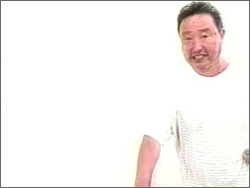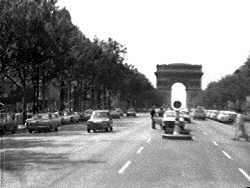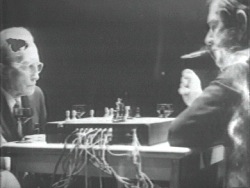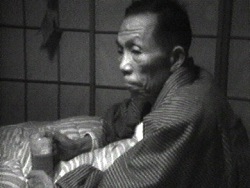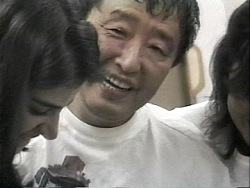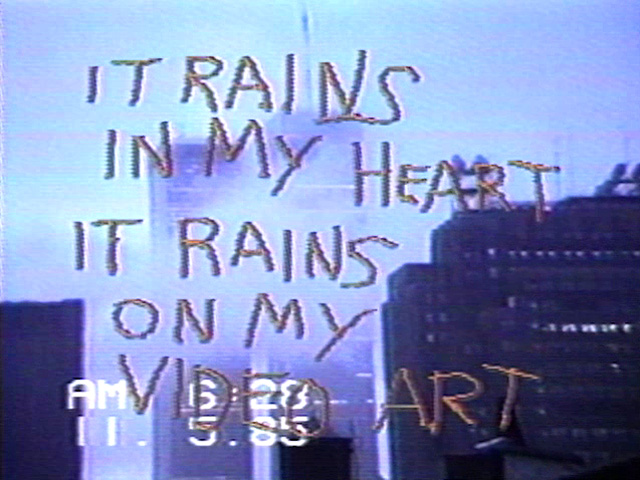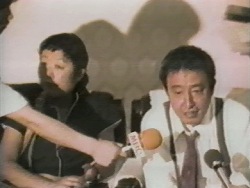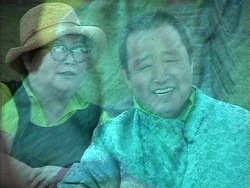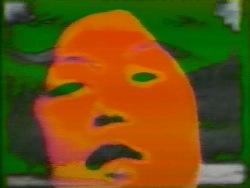
SHIGEKO KUBOTA: Daylong Tribute Screening at EAI
SHIGEKO KUBOTA: Daylong Tribute Screening at EAI
535 W. 22nd St. 5th Floor
New York, NY 10011
11:00 am - 8:15 pm
Admission Free
SHIGEKO KUBOTA: Daylong Tribute Screening at EAI
535 W. 22nd St. 5th Floor
New York, NY 10011
11:00 am - 8:15 pm
Admission Free
SHIGEKO KUBOTA: Daylong Tribute Screening at EAI
535 W. 22nd St. 5th Floor
New York, NY 10011
11:00 am - 8:15 pm
Admission Free
Works
With April is the Cruelest Month, Kubota continues her ongoing video diary project. Here she reflects on her relationship with her husband Nam June Paik, in a collage of documents including interviews, performances and installations, as well as footage of the couple in Miami Beach, where they spent their winter months.
This early video document is Kubota's answer to the question, "What happens if you travel with a portapak instead of American Express through Europe?" Spontaneous, low-tech and infused with a spirit of uncensored adventure, Kubota's video travel diary is a personal and cultural time capsule of...
George Maciunas With Two Eyes 1972, George Maciunas With One Eye 1976
Shigeko Kubota
1994, 7 min, b&w, sound
In this rare portrait of Fluxus founder George Maciunas, Kubota pays homage to a mentor and fellow Fluxus artist. Maciunas tours SoHo with artists and friends, including Nam June Paik, Barbara and Peter Moore, and Yoshi Wada; Kubota also documents Fluxus artist Ben Vautier's 1976 opening at the Guggenheim Museum in New York.
In elegiac work, Kubota explores the relationship between two of the most influential figures in 20th century art and music. The core images are Kubota's own photographs of the famous chess match between Duchamp and Cage in 1968, in which the board, wired for sound, functioned as a musical instrument. Recordings of Cage's compositions accompany the stills and video footage, which Kubota electronically processes to abstraction.
"Father, why did you die?" With this deeply intimate statement of grief, Kubota mourns the death of her father. Video and television are central to her ritual of mourning, and allow her father to assume a presence after death. Kubota and her father, who was dying of cancer in Japan, are seen...
A single-channel version of Kubota's installation of the same name, Rock Video: Cherry Blossom is a lyrical fusion of nature and technology. Branches of pink cherry blossoms etched against a vivid blue sky are the starting point for this sensual visual haiku. Through a fluid application of...
This chapter of Kubota's ongoing video diary is an intimate and humorous portrait of her husband, artist Nam June Paik, as he undergoes physical therapy after an illness.
This chapter of Kubota's ongoing video journal chronicles the aftermath of a flood that destroyed Kubota and Nam June Paik's loft studio, after a roofer left work unfinished during a rainstorm. Kubota tells this story, and the ensuing struggles with their co-op, as a subjective, tragicomic...
Trip to Korea is Kubota's poignant account of her husband Nam June Paik's return to his native Korea after a thirty-four-year absence. In documenting his reunion with surviving family members and friends, she "writes" an intimate chapter of her video journal in which memory, history and the...
Kubota narrates this surrealistic video diary of her month-long sojourn with a Navajo family on a reservation in Chinle, Arizona. She talks to the women as they cross the desert in a horse-drawn carriage to fetch water from the nearest well, and captures footage of tribal songs and dances, children's pranks and a local rodeo. Despite the language barrier between the Japanese Kubota and the English-speaking Native Americans, the artist befriends her subjects through sheer force of personality. Kubota relates to her subjects less like a documentary observer and more like a distant relative, with humor and affection.
Over the past several decades, Shigeko Kubota has produced a significant body of video installation work. Kubota's sculptural installations include works that recast the iconography and theories of Marcel Duchamp, and those that focus on landscape and nature. In each work, her signature...
Winter in Miami 2005 is Kubota's touching tribute to her husband, artist Nam June Paik, who died at their home in Miami in January 2006. This intimate piece features previously unreleased sound recordings of Paik at the piano in his New York home in 2005, playing haunting compositions that he wrote in 1945, when he was thirteen years old. Layered footage of Kubota and Paik, sitting together in Miami in the winter before his death, takes on the resonance of memory.
